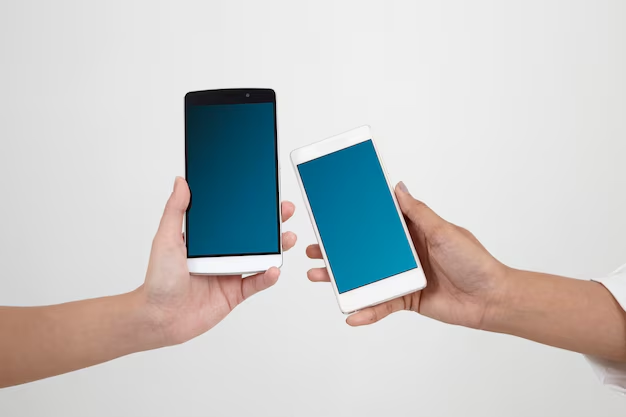Effortlessly Transfer Photos from Android to Android: Your Ultimate Guide
In today’s fast-paced digital age, transferring photos from one Android device to another should feel as seamless as snapping the pictures themselves. Whether you’re upgrading to a new phone, sharing memories with family, or simply backing up your precious moments, knowing the best methods to transfer photos can save you time and frustration. Let's explore multiple, user-friendly ways to achieve this with ease.
Why Transfer Photos?
As technology evolves, our reliance on smartphones to capture life's moments has only increased. Photos hold sentimental value and preserve our memories, making them invaluable. When upgrading to a new device, you don’t want to lose these precious memories. Additionally, sharing photos between devices is essential for collaboration, creativity, and storage management. So, let's delve into the methods that make transferring photos a breeze.
Method 1: Use Google Photos
Advantages of Google Photos
Google Photos is one of the most efficient and popular methods to transfer photos due to its seamless integration with Android devices. By backing up and syncing your photos to your Google account, you can easily access them on any device, anywhere.
Key Benefits:
- Unlimited photo storage for high-quality images.
- Automatic backups ensure your photos are always safe.
- Easy sharing options with others.
- Syncs effortlessly with all Android devices.
How to Transfer Using Google Photos
- Download and Open Google Photos: Ensure you have the Google Photos app on both Android devices.
- Sign In with Google Account: Use the same Google account on both devices.
- Enable Backup & Sync: On the source device, navigate to Settings > Backup & sync, and toggle it on.
- Sharing Photos: Once synced, photos can easily be accessed on the second device by signing into Google Photos with the same account.
Method 2: Bluetooth Transfer
When to Use Bluetooth
Bluetooth is a classic method, perfect for transferring smaller batches of photos directly between two devices in close proximity. It's an excellent choice when you don’t have an internet connection.
Steps to Transfer via Bluetooth:
- Activate Bluetooth: Turn on Bluetooth on both devices (Settings > Bluetooth).
- Pair Devices: Have the devices discoverable, then pair them.
- Select Photos to Transfer: Open the photo gallery, select photos, and choose Share > Bluetooth.
- Confirm Receiving: Accept the transfer on the recipient device.
Pros and Cons
- Pros: Efficient for smaller transfers, no internet needed.
- Cons: Slower transfer speed compared to other methods; best for small numbers of photos.
Method 3: Using Nearby Share
Overview of Nearby Share
Android’s Nearby Share is akin to Apple’s AirDrop, allowing users to share photos quickly without the need for applications.
Steps to Use Nearby Share:
- Enable Nearby Share: On both devices, turn on Nearby Share from the Quick Settings panel.
- Prepare to Share: Select photos to transfer, click Share, then choose Nearby Share.
- Choose Receiving Device: Follow prompts to send photos to the selected recipient device.
Benefits
- Fast transfer speeds.
- Doesn't require downloading third-party apps.
- Works offline for nearby devices.
Method 4: Transfer with a Third-Party App
The Role of Third-Party Apps
For users who desire a bit more functionality, third-party apps like SHAREit, Xender, and Send Anywhere offer comprehensive file-sharing features.
How to Use:
- Install and Open the App: Download your preferred app on both devices.
- Connect Devices: Follow in-app instructions to link devices.
- Select and Transfer Photos: Use the app’s interface to select photos and initiate the transfer.
Why Consider Third-Party Apps?
- Supports large file transfers.
- Offers cross-platform capabilities (Android to iOS).
- Often faster than Bluetooth.
Method 5: Direct USB Connection
Using USB for Direct Transfers
A direct USB connection provides the most straightforward and reliable way for those who prefer risk-free transfers without using the web or apps.
Steps to Transfer:
- Connect Devices: Use a USB cable to connect the Android devices.
- Select USB Mode: Choose the 'File Transfer' mode on the source device.
- Use File Manager: On the recipient device, use a file manager app to navigate and copy photos from the connected device.
Considerations
- High-speed transfer, especially for large batches.
- Secure, as there's no reliance on external networks.
Key Takeaways 📝
Here’s a quick at-a-glance guide to help you decide which method suits your needs best:
- Google Photos: Ideal for those with a reliable internet connection wanting seamless, unlimited backups.
- Bluetooth: Great for small, quick transfers without internet.
- Nearby Share: Perfect for fast, offline sharing in close range.
- Third-Party Apps: Versatile for cross-platform and large file transfers.
- USB Connection: Best for a reliable, high-speed transfer without internet dependency.
Final Reflection: Empower Your Photo Transfers
Transferring photos between Android devices doesn’t have to be a complicated task. With a multitude of methods at your disposal, choosing one that aligns with your needs, whether it’s speed, convenience, or security, is crucial. This comprehensive guide outlines the best ways to safeguard your memories and share them with ease, ensuring you're never disconnected from your cherished moments. Embrace these tools and tips, and transform your photo transfers into a simple journey. Enjoy the freedom and flexibility these methods offer as you capture and share life's moments.

Related Topics
- How Can I Transfer a Video From Iphone To Computer
- How Can I Transfer Apps From Iphone To Ipad
- How Can I Transfer Apps From One Iphone To Another
- How Can I Transfer Contacts From Iphone To Iphone
- How Can I Transfer Contacts From One Iphone To Another
- How Can I Transfer Data From Iphone To Android
- How Can I Transfer Data From Iphone To Iphone
- How Can I Transfer Data From Iphone To Samsung
- How Can I Transfer Files From Android To Pc
- How Can I Transfer From Iphone To Samsung